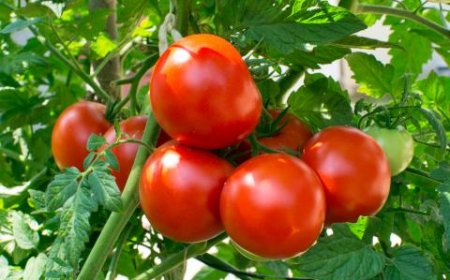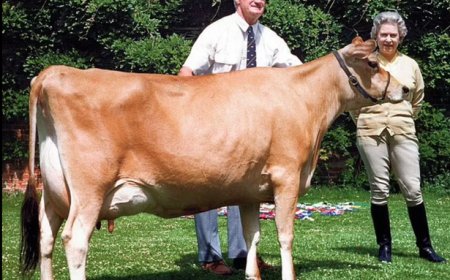New Guinea Impatiens: A Great Option for Shady Areas in Your Garden
Discover why New Guinea Impatiens are a great option for shady areas in your garden. Learn about their benefits, growing requirements, and tips for maintenance and care. With proper care, you can enjoy their unique bi-color or tri-color blooms from spring until autumn.

New Guinea Impatiens: A Great Option for Shady Areas in Your Garden
Gardening is a rewarding hobby that brings life and color to outdoor spaces. Plants play an essential role in gardens, adding character and ambiance to any landscape. However, choosing the right plants for specific areas of your garden can be challenging. For gardeners with shady areas in their landscape, New Guinea Impatiens is an excellent option to consider. In this article, we will delve into the characteristics of New Guinea Impatiens, tips for growing them, and the benefits of adding them to your garden.
Characteristics of New Guinea Impatiens
New Guinea Impatiens is a species of flowering plants that are native to New Guinea and parts of Indonesia. The plant belongs to the Balsaminaceae family and is a hybrid between Impatiens hawkeri and Impatiens species. Here are some characteristics of New Guinea Impatiens:
Appearance
New Guinea Impatiens are annual plants that grow up to 1 to 2 feet tall and spread up to 1 to 1.5 feet wide. The plant has succulent stems, and the leaves are glossy, oval-shaped, and can range in color from green to bronze. The flowers are the highlight of the plant, and they bloom from spring until the first frost in autumn.
Growth Habit
New Guinea Impatiens have a bushy, upright growth habit that makes them ideal for garden borders, flower beds, and containers. The plant grows well in both sun and shade, but they require specific soil, water, and light conditions.
Flowers and Color Options
The flowers of New Guinea Impatiens come in a range of colors, including pink, orange, red, purple, and white. They have a unique bi-color or tri-color pattern that adds interest to any garden. The flowers are about 2 to 3 inches in diameter, and they bloom in clusters.
Growing New Guinea Impatiens
Growing New Guinea Impatiens is relatively easy, and they require less maintenance than other types of Impatiens. Here are some tips on how to grow and care for New Guinea Impatiens:
Soil Requirements
New Guinea Impatiens prefer well-drained soil that is rich in organic matter. The soil should have a pH range of 6.0 to 6.5. Adding compost or organic matter to the soil before planting can improve soil quality and help retain moisture.
Light Requirements
New Guinea Impatiens grows well in both full sun and partial shade, but they thrive in dappled shade. Too much direct sunlight can cause the leaves to wilt, and too much shade can lead to fewer blooms.
Water Requirements
New Guinea Impatiens requires consistent moisture to thrive, but they don't like to sit in water. Water the plant deeply once or twice a week and ensure the soil remains moist but not waterlogged. Mulching around the plants can help retain moisture and regulate soil temperature.
Fertilizer Requirements
New Guinea Impatiens benefit from regular fertilization during the growing season. Use a balanced fertilizer with equal amounts of nitrogen, phosphorus, and potassium every two weeks to promote healthy growth and blooms.
Propagation
New Guinea Impatiens can be propagated by seeds or cuttings. Seeds should be started indoors six to eight weeks before the last frost date. Cuttings can be taken from mature plants and rooted in water or moist soil.
Benefits of New Guinea Impatiens
Adding New Guinea Impatiens to your garden comes with several benefits. Here are some reasons why they are a great option for shady areas in your garden:
Low Maintenance
New Guinea Impatiens is a low maintenance plant, making it an ideal choice for gardeners who do not have the time or resources to tend to high maintenance plants. They are easy to care for, and require minimal watering and fertilization. In addition, they do not require deadheading, making them even easier to maintain.
Shade Tolerance
One of the most notable benefits of New Guinea Impatiens is its ability to thrive in shady areas. Unlike other plants that require full sunlight, New Guinea Impatiens can thrive in areas with partial or full shade. This makes it an ideal choice for gardens that have limited exposure to sunlight.
Disease Resistance
New Guinea Impatiens are known for their resistance to diseases that commonly affect other plants. This makes them a low-risk option for gardeners who are concerned about plant diseases. In addition, they are resistant to pests such as spider mites and whiteflies, further reducing the need for pesticides.
Long Blooming Season
New Guinea Impatiens have a long blooming season, typically lasting from late spring to early fall. This means that they can provide continuous color to your garden for an extended period of time. This makes them a great option for gardeners who want to maintain a colorful garden throughout the growing season.
Versatile
New Guinea Impatiens are available in a wide range of colors, making them a versatile option for gardeners looking to add some color to their garden. They can be used in a variety of settings, including garden beds, hanging baskets, and containers. They can also be paired with other plants to create a beautiful and diverse garden.
Tips for Growing New Guinea Impatiens
Here are some tips to ensure you get the most out of your New Guinea Impatiens:
Maintenance and Care
New Guinea Impatiens are relatively low maintenance, but some care is necessary to keep them looking their best. Deadheading, or removing spent flowers, encourages new blooms to form and helps the plant to look neat and tidy. If you notice any signs of insect infestation or disease, treat the plants with an appropriate insecticide or fungicide.
One of the best things about New Guinea Impatiens is their versatility. They come in a range of colors, from bright pinks and purples to more subtle shades of white and peach. Some varieties even have bi-color or tri-color blooms, adding even more interest to your garden.
In addition to their beautiful flowers, New Guinea Impatiens have attractive foliage that can range from deep green to variegated. Their leaves are often glossy and can have interesting textures, adding visual interest to your garden even when the plants are not in bloom.
Winter Care
New Guinea Impatiens are typically grown as annuals because they are sensitive to cold temperatures and frost. However, if you live in a warm climate, you may be able to overwinter them indoors or protect them with a frost blanket.
Companion Planting
New Guinea Impatiens pairs well with other shade-loving plants such as ferns, hostas, and coleus. The contrasting foliage and flowers can add visual interest to your garden.
Conclusion
New Guinea Impatiens is an excellent option for gardeners looking to add color and interest to their shady areas. They are low maintenance, versatile, and relatively pest and disease resistant. With proper care and maintenance, you can enjoy their unique bi-color or tri-color blooms from spring until autumn.
FAQs
- What is the difference between New Guinea Impatiens and regular Impatiens?
New Guinea Impatiens are a hybrid between Impatiens hawkeri and Impatiens species, and they have larger flowers, thicker leaves, and more tolerance to sun and heat than regular Impatiens.
- Can I plant New Guinea Impatiens in full sun?
New Guinea Impatiens can tolerate full sun, but they prefer dappled shade or partial shade.
- How often should I fertilize New Guinea Impatiens?
Fertilize New Guinea Impatiens every two weeks with a balanced fertilizer during the growing season.
- Can New Guinea Impatiens be planted in containers?
Yes, New Guinea Impatiens can grow well in containers, hanging baskets, and flower beds.
- Are New Guinea Impatiens deer resistant?
New Guinea Impatiens are not deer resistant and can be damaged by deer if they are present in your area.
What's Your Reaction?






















































